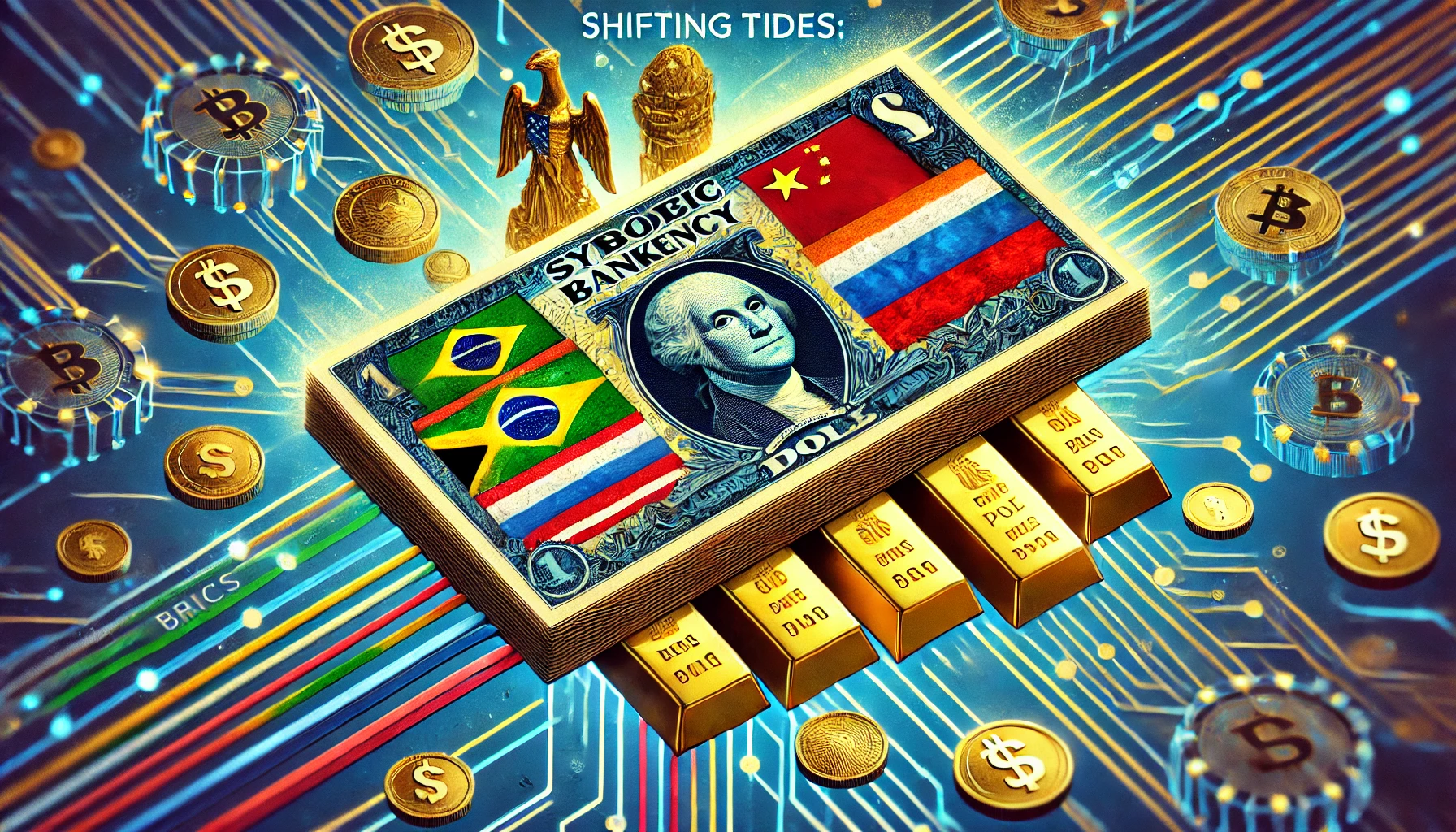Analyzing the BRICS Currency Controversy, India's Gold Surge, and De-Dollarization Talks
 Anjali Jha
Anjali JhaTable of contents
- Table of Contents
- Introduction
- 1. The Symbolic Banknote: More Than Just a Souvenir
- 2. US Concerns & the Challenge of De-Dollarization
- 3. India's Bold Gold Stockpiling: A Strategic Hedge
- 4. Building Alternatives: BRICS Pay & Other Initiatives
- 5. Global Implications: Toward a Multipolar Financial Order
- Conclusion

Table of Contents
- [Introduction]
- The Symbolic Banknote: More Than Just a Souvenir
- US Concerns & the Challenge of De-Dollarization
- India's Bold Gold Stockpiling: A Strategic Hedge
- Building Alternatives: BRICS Pay & Other Initiatives
- Global Implications: Toward a Multipolar Financial Order
- Conclusion
Introduction
At the 16th BRICS Summit in Kazan, Russia captured global attention by unveiling a symbolic banknote featuring the flags of Brazil, Russia, India, China, and South Africa. While many speculated that this gesture was a sign of a new BRICS currency to challenge the US Dollar, the reality is more nuanced. At the same time, India's aggressive gold stockpiling has added another dynamic to the global debate on economic sovereignty and de-dollarization.
1. The Symbolic Banknote: More Than Just a Souvenir
During the summit, photos of President Vladimir Putin holding a banknote quickly went viral. Although many online assumed this was an announcement of a new BRICS currency, multiple fact-checks clarified that the note was purely symbolic—designed to ignite discussion on alternatives to Western-dominated financial systems rather than to launch a currency.
"The banknote, while symbolic, has raised questions about whether BRICS nations are preparing to challenge the US-dominated financial order."
— AFP Fact Check, 2024
This small gesture has set off a cascade of debates, with social media users and analysts alike discussing the potential for a de-dollarization movement. 💬✨
2. US Concerns & the Challenge of De-Dollarization
For decades, the US Dollar has been the lifeblood of global finance, underpinning more than half of international invoices and serving as the primary reserve currency for most central banks. Consequently, any hint of a move away from the dollar is met with alarm in Washington.
Tariff Threats:
President-elect Donald Trump has even threatened 100% tariffs on BRICS nations if they move forward with a new currency initiative. 🚨💸Real-World Challenges:
Despite these bold threats, replacing the dollar is far from simple. The inherent liquidity, global acceptance, and economic stability of the dollar make a swift transition unlikely. Analysts point out that internal divisions and different economic policies within BRICS present enormous hurdles.
3. India's Bold Gold Stockpiling: A Strategic Hedge
While the banknote stirred public debate, the Reserve Bank of India (RBI) has been quietly executing a powerful strategy—boosting its gold reserves. Gold, a time-tested safe-haven asset, serves as a hedge against inflation and currency volatility.
Steady Accumulation:
Since 2017, RBI’s consistent gold buying has built up its reserves significantly. 📈Record Purchases in 2024:
In 2024, India’s gold acquisitions quadrupled compared to 2023, making it the world’s second-largest gold buyer.Repatriation Efforts:
Along with increased purchases, the RBI is also repatriating gold stored overseas—securing domestic control and reducing geopolitical risk.
These measures signal India’s commitment to diversify its reserves and reduce reliance on the dollar, bolstering economic sovereignty.
4. Building Alternatives: BRICS Pay & Other Initiatives
Beyond symbolic gestures, BRICS nations are exploring real alternatives to diminish dependence on Western financial systems:
BRICS Pay:
A decentralized payment messaging system that facilitates international transactions in local currencies. This initiative offers a transparent, efficient alternative to traditional systems like SWIFT. 💳🌐BRICS Bridge:
Proposed as a way to enable direct cross-border payments using central bank digital currencies (CBDCs), this idea could help bypass intermediaries. However, it faces challenges like regulatory differences and diverse monetary policies.Local Currency Settlements:
The Kazan Declaration endorsed the use of local currencies for trade between BRICS nations and their partners. India, for example, has already begun settling trade in rupees with countries like Russia and the UAE.
These initiatives represent bold steps toward a multipolar financial order, although the path to replacing the dollar is expected to be gradual.
5. Global Implications: Toward a Multipolar Financial Order
If these moves continue, we could see profound shifts in the global financial landscape:
Unified Currency Feasibility:
Can a single BRICS currency realistically replace the dollar? The idea faces many obstacles given the diverse economic policies and regulatory frameworks among member countries.US Response:
The US is likely to respond with further tariffs and sanctions, reinforcing the dollar’s dominance in the short term.Fragmentation vs. Integration:
A shift toward multiple, regionally integrated payment systems could lead to a fragmented global financial network—potentially reducing the dollar’s clout but also increasing transaction complexities and regulatory challenges.
In summary, while these initiatives may not immediately dethrone the US Dollar, they signal the early stages of a shift toward a more diversified global reserve system. 🌐🔄
Conclusion
The unveiling of a symbolic BRICS banknote and India's aggressive gold accumulation are more than mere gestures—they are early signals in a broader shift toward de-dollarization and economic sovereignty. While many practical challenges remain, these moves indicate that emerging economies are actively exploring alternatives to the US-led financial order.
What do you think? Are these steps the beginning of a new multipolar financial order, or are they simply symbolic gestures? Share your thoughts in the comments below! 😊👇
Subscribe to my newsletter
Read articles from Anjali Jha directly inside your inbox. Subscribe to the newsletter, and don't miss out.
Written by

Anjali Jha
Anjali Jha
| Banking & Insurance Enthusiast | Future Finance Leader| | Passionate about Banking, Finance & Insurance| | Committed to continuous learning & skill-building| | TCS NQT Cleared – Ready for new challenges |